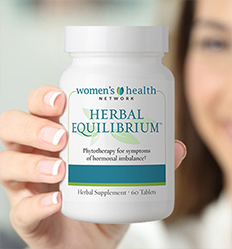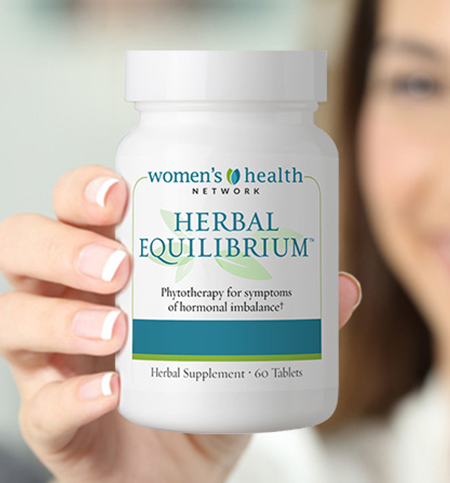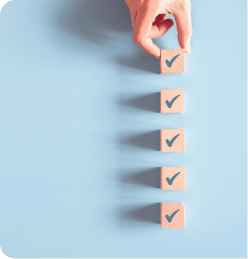Authored by Dr. Mary James, ND
Hot flashes and night sweats are episodes of sudden and profuse heat sensations that spread quickly through the upper part of the body. Then, they are usually followed by heavy sweating and can dramatically disrupt your life, interfering with sleep, social connections, work, travel, exercise, sex — and much more.
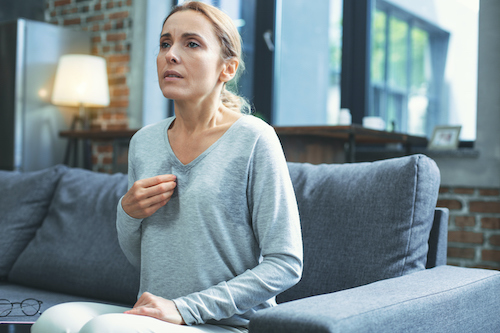
Hot flashes and night sweats are the most commonly reported symptom of the major hormonal transition into perimenopause and menopause. They are “vasomotor symptoms,” which are symptoms caused by or related to the closing or opening of blood vessels by certain nerves and muscles. These actions lead to an abrupt increase in blood flow that can last 1 to 5 minutes.
In addition to drenching perspiration, hot flashes may be associated with:
- flushing and skin blotchiness
- chills and shivering
- anxiety
- tingling, crawling skin sensation (formication)
- increased heart rate and/or palpitations
- weakness
- feeling trapped or suffocated
Hot flashes aren’t a simple symptom to deal with because they invade every corner of your life and undermine your sense of wellbeing. Research and experience shows that you can relieve and minimize the impact of hot flashes and night sweats, but you have to start by finding out the causes of hot flashes.
Hot flashes — the first and last symptoms of menopause
Three out of four women experience hot flashes in menopause. As symptoms, hot flashes usually start about 1-2 years before the onset of menopause (i.e., one year of no periods), and continue for up to five years after menopause, depending on contributing factors. Night sweats, in particular, can hurt your overall health because they disrupt sleep, which can lead to mental and physical concerns.
Hot flashes and night sweats feel terrible and can make you feel powerless over your own body. Conventional healthcare practitioners often offer treatments, but women don’t want to take them for their hot flashes. For example, they might prescribe antidepressants or hormone replacement therapy (HRT). They don’t tend to recommend natural options like progesterone creams, or well-known hormone-balancing herbs like black cohosh or red clover, perhaps because they don’t know which products or dosages are best.
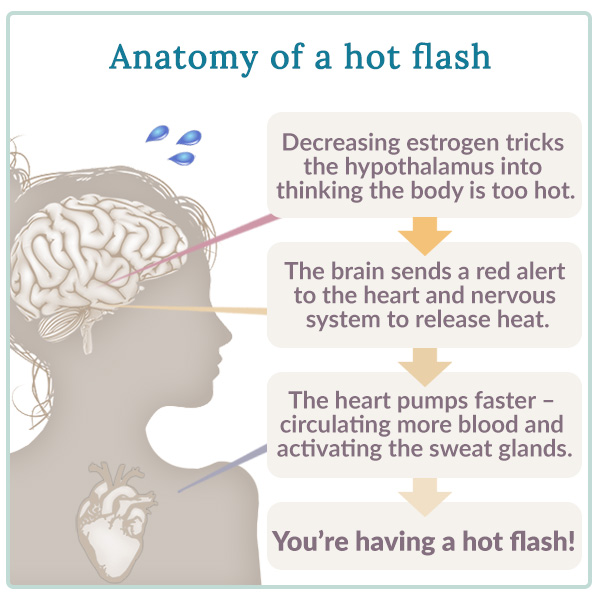
Top triggers for hot flashes and night sweats
Stress on your body — both emotional and physical — is one of the top causes of hot flashes. Physical stress, such as imbalanced or inadequate nutrition, can cause and/or worsen menopause symptoms like hot flashes. It starts with chronic stress that then triggers excess amounts of cortisol, one of the body’s major hormones. Then, over time, high cortisol disrupts hormonal balance throughout the body, causing difficult hormonal symptoms like hot flashes.
In fact, a study of more than 3,000 women found anxiety to be the most consistent psychological factor associated with hot flashes.
Here’s an example: you feel perfectly fine and physically comfortable until you suddenly get stressed about something at work or a personal problem, and then instantly, a raging hot flash erupts. This actually happened to me when I quickly realized that the romantic email I’d just sent was misdirected to my company’s CEO!
Anxiety, fear and emotional stress can lead to hot flashes and night sweats
Scientific research confirms that stress is one of the major causes of hot flashes, and studies also show that women who are depressed, in low socioeconomic positions, or who were abused or neglected in early life have more frequent hot flashes. However, help can be found in relaxation techniques, mindfulness-based stress reduction, hypnosis, counseling and cognitive-behavioral training.
Many types of stress can lead to increased levels of stress hormones, such as insulin resistance and smoking. Obesity causes increases in hot flashes in younger women, but reduces them in older women.
Other common hot flash triggers:
- Diets high in sugar and or simple carbohydrates
- Caffeine, nicotine and stimulants
- Alcohol, even when small amounts
- Hot drinks or foods, spicy or temperature-wise
- Hot spaces, including stuffy bedrooms, hot tubs, showers and saunas
- Crowded areas
- Bad air quality or lack of fresh air
- Intensive exertion, exercise or any activity that heats you up without adequate cool-down time
Are herbs effective against hot flashes and night sweats?
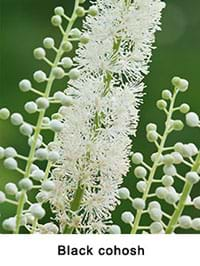
Many women want a natural approach to relieve their hot flashes because the risks associated with HRT, especially when used long-term, have become clearer. Because of that, we advocate a combination approach that centers on phytotherapy, or the use of plants for healing purposes.
Compared to synthetic or horse-derived HRT or other prescription medications, phytotherapy typically requires more time for results because it works with your body to restore hormonal balance naturally. The right combination of herbs is important for effective hot flash relief because they help each other to work. For example, different plant chemicals work with your neuroendocrine system to help your hormones communicate with your brain, nervous system and endocrine organs.
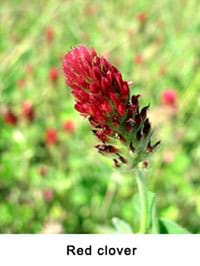
Plant-based therapy can help increase or decrease cellular responses depending on your unique body needs. This is known as an “adaptogenic” effect and is probably due to “phytocrine responses” in your body. Phytocrines are the bioactive molecules in plants that share features with your own hormones and can then directly connect with your endocrine system.
Plants help naturally maintain hormone balance by encouraging your body to make more of a certain hormone, mimicking your own hormones, as well as stimulating the same response in the body as a natural hormone.
Look for a remedy that includes plant names such as kudzu, black cohosh, passionflower, red clover, ashwagandha, chastetree and wild yam. Herbal options work best to ease you into hormonal balance when used alongside healthy lifestyle and dietary choices.
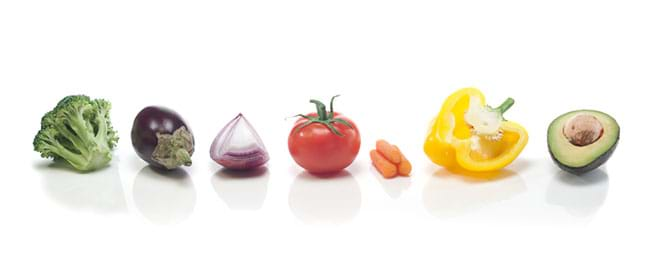
5-point plan to naturally reduce hot flashes and night sweats
Choose one or more of these ideas to begin reducing the frequency and/or severity of your hot flashes.
Track your personal hot flash triggers
Do they happen more at certain times during the day or night? Do they happen when you have certain foods or drinks? Keep a hot flash journal for a few weeks noting when you have symptoms to see if any patterns emerge.
Supplement with time-tested herbal combinations
Several key herbs have been used successfully over time to help reduce hot flashes and also other menopause symptoms. A good blend of the top herbs generally works better for more women than single-ingredient options. The right forms and dosages also matter because you want the compounds in the herbs to be “bioavailable,” or usable, by your body. For example, hundreds of thousands of women have found success with our safe and natural Herbal Equilibrium.
Prevent hot flashes with food
Cut down on sugar, and eat whole, fresh foods, such as plenty of fruits and vegetables, healthy fats and protein. Then try adding a good quality multivitamin-mineral every day for a few months, along with essential fatty acids. Finally, Some women get good results with soy-based foods and other top foods for hot flashes.
Take care of your emotional health
Take little, steady steps to reduce stress in your life bit by bit. For example, experiment with meditation, deep breathing, yoga and other mindfulness practices. You could also go outside more often and take regular walks in nature. Vent to a friend when you need to.
Move around
Exercise helps decrease hot flashes, partly because it reduces anxiety, which is one of the top causes of hot flashes. In a small study, women who exercised had fewer hot flashes, while those who did not experienced an increase. Choose a type of physical movement that doesn’t make you feel more stressed-out or overheated and also leaves you time to cool down.

Everything’s easier without hot flashes and night sweats
There are safe, natural ways to limit the impact of your hot flashes and night sweats and find overall menopause symptom relief. Your body has the built-in ability to recover and maintain hormonal balance with a little extra support, both physical and emotional. When you tune into your body and restore hormonal balance naturally, you’ll feel more comfortable and create better long-term health at the same time.
https://www.obgyn.net/menopause/managing-menopause-part-1-vasomotor-symptoms
Freeman, E.W., et al. 2005. The role of anxiety and hormonal changes in menopausal hot flashes. Menopause, 12 (3), 258–266. URL (abstract): https://www.ncbi.nlm.nih.gov/pubmed/15879914 (accessed 01.29.2008).
[AMA format for Freeman article]: Freeman EW, Sammel MD, Lin H, et al. The role of anxiety and hormonal changes in menopausal hot flashes. Menopause. 2005 May-Jun;12(3):258-66.
1 Shanafelt TD, Barton DL, Adjei AA, Loprinzi CL. Pathophysiology and treatment of hot flashes. Mayo Clin Proc. 2002 Nov;77(11):1207-1218. ENotes Web site. https://www.enotes.us/hotflashes2002.pdf. Accessed June 13, 2014.
1 Shanafelt TD, Barton DL, Adjei AA, Loprinzi CL. Pathophysiology and treatment of hot flashes. Mayo Clin Proc. 2002 Nov;77(11):1207-1218. ENotes Web site. https://www.enotes.us/hotflashes2002.pdf. Accessed June 13, 2014.
1 Shanafelt TD, Barton DL, Adjei AA, Loprinzi CL. Pathophysiology and treatment of hot flashes. Mayo Clin Proc. 2002 Nov;77(11):1207-1218. ENotes Web site. https://www.enotes.us/hotflashes2002.pdf. Accessed June 13, 2014.
1 Thurston RC, Joffe H. Vasomotor symptoms and menopause: findings from the Study of Women’s Health across the Nation. Obstet Gynecol Clin North Am. 2011 Sep;38(3):489-501.
1 Thurston RC, Joffe H. Vasomotor symptoms and menopause: findings from the Study of Women’s Health across the Nation. Obstet Gynecol Clin North Am. 2011 Sep;38(3):489-501.
1 Thurston RC, Joffe H. Vasomotor symptoms and menopause: findings from the Study of Women’s Health across the Nation. Obstet Gynecol Clin North Am. 2011 Sep;38(3):489-501.
1 Tremblay A1, Sheeran L, Aranda SK. Psychoeducational interventions to alleviate hot flashes: a systematic review. Menopause. 2008 Jan-Feb;15(1):193-202.
1 Elkins GR, Fisher WI, Johnson AK, et al. Clinical hypnosis in the treatment of postmenopausal hot flashes: a randomized controlled trial. Menopause. 2013 Mar;20(3):291-298.
1 Study looks at breathing techniques to manage hot flashes. Indiana University Simon Cancer Center; News Archives. IU Simon Cancer Center Web site. https://cancer.iu.edu/news-publications/article.shtml?id=3215. Accessed June 13, 2014.
1 Thurston RC, El Khoudary SR, Sutton-Tyrrell K, et al. Vasomotor symptoms and insulin resistance in the study of women’s health across the nation. J Clin Endocrinol Metab. 2012 Oct;97(10):3487-3494.
1 Thurston RC, Joffe H. Vasomotor symptoms and menopause: findings from the Study of Women’s Health across the Nation. Obstet Gynecol Clin North Am. 2011 Sep;38(3):489-501.
1 Thurston RC, Sowers MR, Chang Y, et al. Adiposity and reporting of vasomotor symptoms among midlife women: the study of women’s health across the nation. Am J Epidemiol. 2008 Jan 1;167(1):78-85.
1 Thurston RC, Santoro N, Matthews KA. Adiposity and hot flashes in midlife women: a modifying role of age. J Clin Endocrinol Metab. 2011 Oct;96(10):E1588-E1595.
1 Thurston RC, Joffe H. Vasomotor symptoms and menopause: findings from the Study of Women’s Health across the Nation. Obstet Gynecol Clin North Am. 2011 Sep;38(3):489-501.
1 Chen J. Menopause: Western and Traditional Chinese Medicine Perspectives, Part II. Acupuncture Today. May, 2002;3(5). Acupuncture Today Web site: https://www.acupuncturetoday.com/archives2002/may/05chen.html. Accessed June 13, 2014.
1 Ueda M. A 12-week structured education and exercise program improved climacteric symptoms in middle-aged women. J Physiol Anthropol Appl Human Sci. 2004 Sep;23(5):143-148.
Further reading
Davis, M., et al. 2000. The relaxation and stress reduction workbook. Oakland, CA: New Harbinger Publications.







